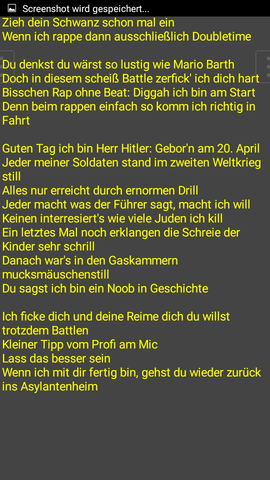
The online presence of gangs has been established by other studies as well (King, Walpole, & Lamon, 2007 Decker & Pyrooz, 2012 Van Hellemont, 2012 Knox, 2011 Decary-Hetu & Morselli, 2011 Decker & Pyrooz, 2011a).Scholarship suggests that more organized gangs may be more likely to take advantage of the Internet (Moule, Pyrooz and Decker, 2014).Īccording to the NGIC (2011) report, gang members use the Internet for a variety of purposes, including to communicate, intimidate, promote and recruit, showcase illegal exploits, and facilitate criminal activity. Drawing from law enforcement reports and social networking websites, the FBI’s National Gang Intelligence Center (2011), determined that gang members are “becoming increasingly savvy and are embracing new and advanced technology to facilitate criminal activity” (p.

According to O’Deane (2011), “its ease of use, potential audience size, and reduced risk of user detection has made the Internet one of the most prominent methods of gang communication” (p. In part due to the shrinking gap between wealthy and poor communities’ access to technology and the Internet, gang members appear to be increasing their online presence and taking advantage of social media (Pyrooz et al., 2015). These traits that make the Internet attractive to terrorists also make it attractive to gang members as a medium through which to communicate and spread their message (Moule, Decker & Pyrooz, 2013). Weimann (2004) explains that the Internet is ideal for terrorist organizations because it offers easy access, little regulation and censorship, potentially large audiences, anonymity, and the fast flow of information. Terrorist organizations and other extremist groups use the Internet to recruit new members and disseminate violent messages (Weimann, 2004 Zanini & Edwards, 2001). Cyberviolence also includes using technology in support of prospective acts of terror (Holt & Bossler, 2014). This type of crime includes cyberbullying, which has become an increasingly serious problem as youth exposed to cyberbullying suffer very real consequences, like poor school performance, depression, and suicide attempts (Bonanno & Hymel, 2013 Hinduja & Patchin, 2010 Burgess-Proctor, Patchin, & Hinduja, 2010 Dehue, Bolman & Vollink, 2008). While all four areas are important (see Holt & Bossler, 2014, for a detailed review of each area), the current study focuses on cyberviolence.Ĭyberviolence involves the ways individuals use the Internet to cause harm in real or virtual environments (Holt & Bossler, 2014). For instance, the Internet has increased opportunities in four main cybercrime areas: cybertrespass, cyberdeception/theft, cyberporn and obscenity, and cyberviolence (Holt, Bossler & May, 2012 Holt & Bossler, 2014). With criminals logging on, the Internet has also transformed criminal behavior by providing more criminal opportunities to a wider range of people. In their survey of 585 individuals at risk for and involved in criminal behavior, Moule, Pyrooz and Decker (2013) reported a positive relationship criminal offending and Internet adoption further, 81% of their sample reported social network usage. Unfortunately, the Internet has also become popular among criminals. The Internet and social media have even been used to help organize revolutions (Lister & Smith, 2011).
#Rap battle text online tv
People can now stay in touch with long-distance relatives and friends via Facebook, stream TV shows and movies, shop online, find medical information and advice, and get a higher degree without ever leaving their house. Clearly, Internet use is widespread, and it has dramatically changed society (Holt et al., 2012 Holt & Bossler, 2014). It is estimated that there are about 3.1 billion Internet users worldwide and that 86.9% of Americans are Internet users (Internet World Stats, 2014).

Using a set of six underground battle rap videos, we demonstrate a connection between online flame wars and street-level violence.
#Rap battle text online code
According to the code of the street, a diss requires a response, often a violent one. We argue that using social media in this way is actually an instrumental use of the Internet because it promotes violence.

Most studies seem to conclude that gang members are not using the Internet instrumentally to commit or promote criminal behavior, but these same studies show that gang members use social media for flame wars-to insult and threaten one another. It has been shown that gangs are active online, but it is unclear how gangs are using the Internet. The Internet is changing society, including criminal behavior.


 0 kommentar(er)
0 kommentar(er)
